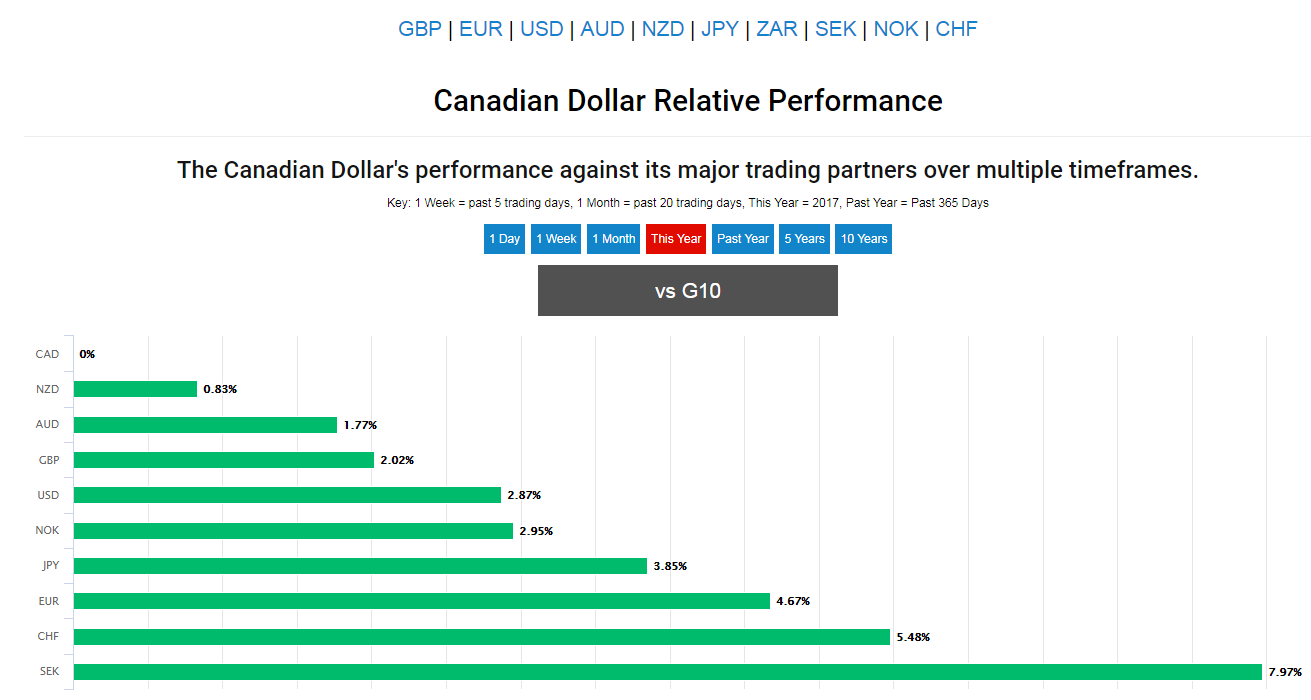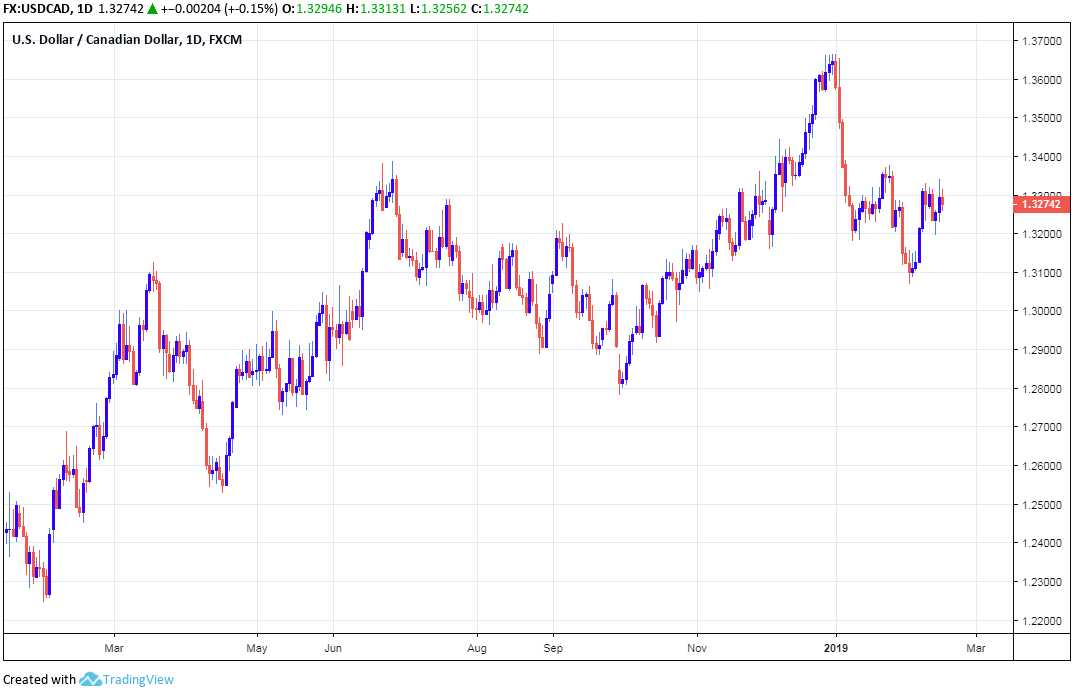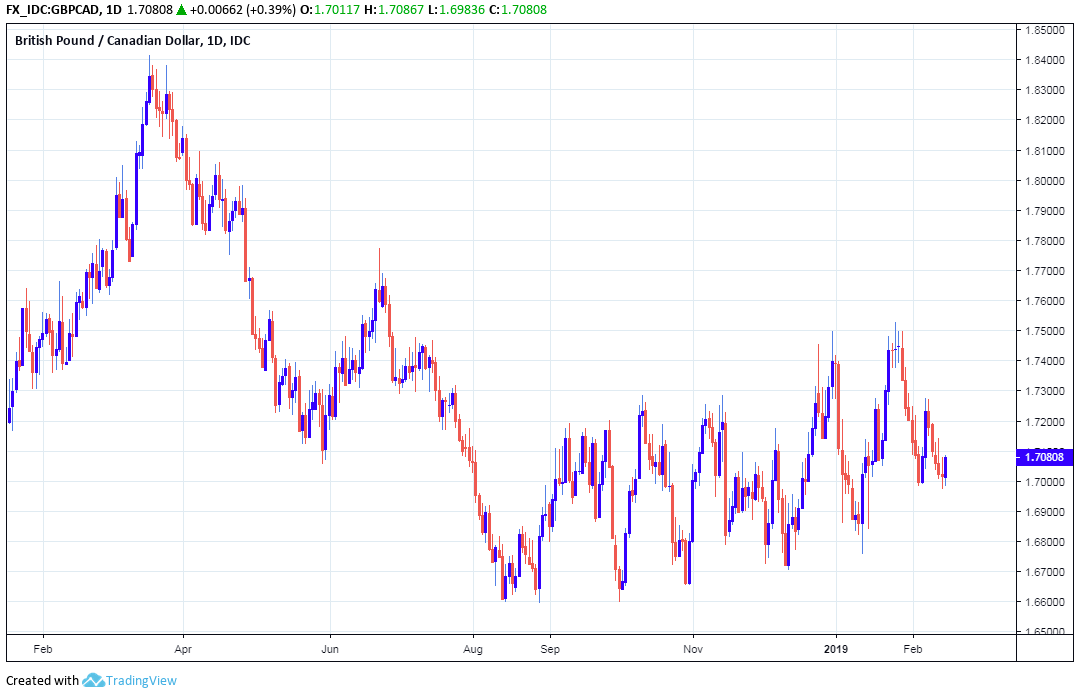The Canadian Dollar: Bank of Canada to Sit on Hands Until 2020 says UBS
- Written by: James Skinner
-

Image © Adobe Stock
- CAD may face moribund few quarters as BoC sits and waits.
- UBS forecasts BoC will leave interest rate unchanged in 2019.
- As economy slows, but Q4 recovery to bring 2020 rate rises.
The Canadian Dollar could face a moribund year ahead if UBS's latest forecasts for the Bank of Canada (BoC) interest rate prove correct, because analysts at the global investment firm are saying the BoC will sit on its hands until at least the first quarter of 2020.
A slowdown in the U.S. economy across the border is expected to see Canadian GDP growth moderate during the year ahead, while the after effect of 2018's fall in oil prices and changes in the domestic housing market will mean inflation also declines in 2019.
All of the above factors are forecast to see the Bank of Canada remain on a cautious footing in the months ahead, opting to keep its interest rate steady at 1.75% rather than raising it in the manner that it did back in 2018, when rates were lifted by 25 basis points three times.
"We think the BoC will remain on hold in 2019, as inflation falls below target and growth remains low albeit gradually rising. We expect them to hike again in 2020Q1 after seeing solid GDP growth in 2019Q4 and thinking that the economy has recovered from the fall in oil prices, and after seeing that the 12-month change in core prices is finally returning to their target," says Laura Desplans, an economist at UBS.
Financial markets are already betting the BoC will do nothing in 2019, even though the Bank's guidance contradicts the market's view to some extent, so any decisions not to raise interest rates won't necessarily hurt the Canadian Dollar. But this won't provide it with any impetus for further gains either.
Pricing in the overnight-index-swap market implies an October 30, 2019 cash rate of 1.78%, which is barely any higher than the current 1.75% rate actual rate and suggests strongly that investors have a pessimistic view of the outlook for Canadian interest rates.
Fortunately for some, the Loonie has already topped the G10 league table of best performers for 2019, although whether it remains there will depend on many factors including the performance of rival currencies that could eventually find themselves with a tailwind of support from the market.

Above: Canadian Dollar performance against G10 rivals in 2019.
All of the European currencies except Pound Sterling are underwater against the U.S. Dollar this year, the Canadian Dollar has risen against everything in the G10 universe, but a surprise recovery in European economic growth later in the year could yet change things.
"We expect inflation to remain below the BoC's target in 2019. The decline in oil prices will drag headline inflation lower in the near term. The 12-month change in core CPI is now slightly above target at 2.1%. But we expect shelter inflation, the largest component in the CPI, to moderate as lagged effects of falling house prices put downward pressure and stabilization in mortgage rates removes upward pressure," says Desplans.
Changes in interest rates are normally only made in response to movements in the inflation outlook but impact currencies through the push and pull influence they can exert over international capital flows.
A pick-up in growth elsewhere in the world could easily encourage the likes of the European Central Bank (ECB) to begin contemplating lifting their interest rates sooner rather than later, at a time when the BoC is seen firmly on hold, which would be bad for the Canadian Dollar.
The Bank of Canada said in January it will be more cautious about raising interest rates going forward than earlier guidance had suggested it would. The message was clear: it will move much more slowly than before.
"The US economy is slowing, and slower US growth will weigh on the Canadian economy. We attribute most of the deceleration in the US to the trade war with China. We expect the tariff effects to wane and, as US growth reaccelerates in the second half of 2019, supporting the Canadian economy," Desplans says.

Above: USD/CAD rate shown at daily intervals.
A slowdown in global growth, collaps of oil prices and an uncertain outlook for trade relations between the U.S. and China were all cited as factors behind why the BoC no longer intends to aim for the "neutral" level of interest rates this year.
Previously the BoC said rate could rise to between 2.5% and 3.5% by early 2020, which led markets to believe as many as three rate hikes were in the cards for 2019 and also explains why the Canadian Dollar fell so sharply between early December and early January.
"We expect the contour of Canadian growth to be driven by lower oil prices, slowing in the US economy, and weakness in the Canadian housing market. These swings, however, obscure what we see as strong underlying economic fundamentals," says Desplans.
Desplans' view of the economy is not out of sync with that put forward by J.P. Morgan earlier in February and the U.S. bank's currency forecasts suggest a tepid few quarters are ahead for the Loonie, with further gains only coming in the final three months of the year.
J.P. Morgan forecasts the USD/CAD rate will hold around the 1.33 level until the end of March, at which point it is seen rising to 1.35, where it will stay throughout the second and third quarters only to decline sharply during the final months of 2019. J.P. Morgan's year-end forecast is 1.28.
The Pound-to-Canadian-Dollar rate is expected to hold the 1.70 level until the end of March before rising to 1.79 by the end of June and 1.80 in time for the end of September, although the rate is forecast to end 2019 at just 1.74.

Above: Pound-to-Canadian-Dollar rate shown at daily intervals.
Time to move your money? Get 3-5% more currency than your bank would offer by using the services of foreign exchange specialists at RationalFX. A specialist broker can deliver you an exchange rate closer to the real market rate, thereby saving you substantial quantities of currency. Find out more here.
* Advertisement









